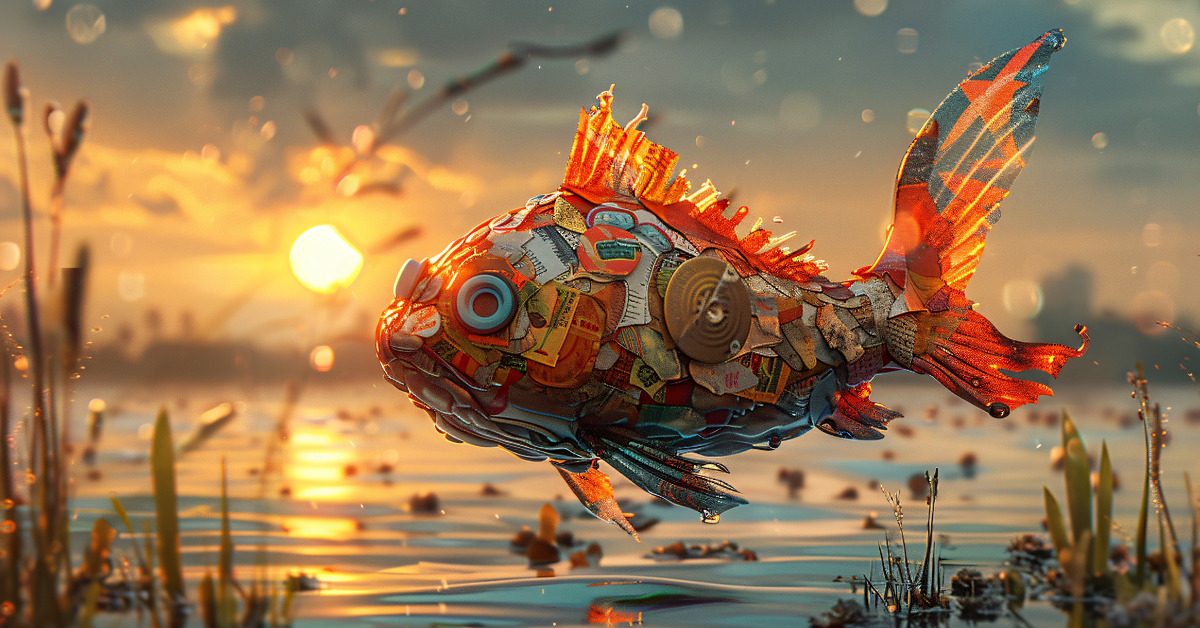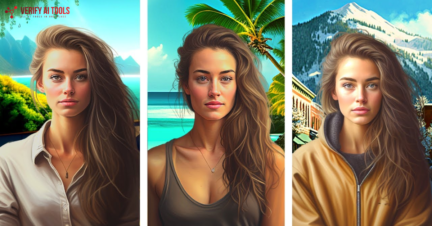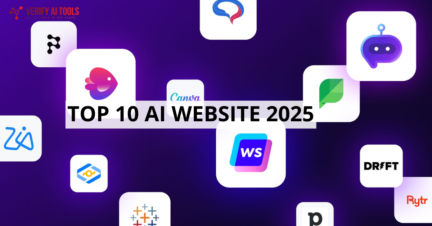AI image generators are revolutionizing how we create visual content, turning simple text descriptions into stunning images. These tools use advanced artificial intelligence to interpret prompts and generate corresponding visuals, making them valuable for designers, marketers, and hobbyists alike. This article explores what AI image generators are, how they work, and highlights the top options available in 2025, helping you choose the best one for your needs.
How They Work
AI image generators rely on machine learning models, such as GANs and diffusion models, trained on large datasets of images and text. When you input a text prompt, the AI interprets it and Unlock the Best AI Character Generator for Writers & RPGs, often allowing for refinements to achieve the desired result.
Top Tools in 2025
Here’s a look at some leading AI image generators, their features, and pricing:
| Tool | Description | Pricing | Key Features |
|---|---|---|---|
| Adobe Firefly | Integrated into Creative Cloud tools | Included in Creative Cloud | High-quality images, detailed lighting, color |
| Midjourney | Standalone tool, popular among artists | $10–$120/month (Basic to Mega) | Flexible control, various GPU hours for generation |
| DALL-E 3 (OpenAI) | Accessible via ChatGPT Plus | $20/month for ChatGPT Plus | Advanced prompt understanding, high-quality output |
| Canva’s Magic Media | Part of Canva Pro, easy to use within platform | $12.99/month for Pro plan | Up to 500 uses/month, integrated design features |
| Google’s Imagen | Available via Vertex AI and ImageFX experiment | Varies, ImageFX is free | High-fidelity, accessible for individual users |
| Microsoft’s Image Generator | Free with some limitations, part of Designer | Free, enhanced with Microsoft 365 | Uses DALL-E 3, easy access for general users |
| Pixlr’s AI Image Generator | Free with basic features, online editing suite | Free, premium for more benefits | Text-to-image, various editing tools |
| DeepAI’s Text2Image | Offers free and Pro plans | Free with limits, Pro subscription | Customizable, generates from text descriptions |
Choosing the Right Tool
When selecting an AI image generator, consider factors like image quality, ease of use, pricing, and additional features. For professional use, tools like Adobe Firefly or Midjourney might be ideal, while casual users might prefer free options like Microsoft’s Image Generator or Pixlr.
Tips for Effective Use
To get the best results, write clear and detailed prompts, experiment with different styles, and refine outputs through iterations. Always ensure ethical usage, respecting the tool’s terms and copyright laws.
Survey Note: Comprehensive Analysis of AI Image Generators in 2025
This section provides a detailed exploration of AI image generators, expanding on the key points and offering a thorough analysis for readers seeking in-depth information. The focus is on understanding the technology, evaluating top tools, and providing practical guidance for selection and usage, ensuring a comprehensive resource for both beginners and professionals.
Understanding AI Image Generators
AI image generators are tools that leverage artificial intelligence to create images from text descriptions, a process enabled by machine learning models. These models, such as Generative Adversarial Networks (GANs) and diffusion models, are trained on vast datasets of images and their associated text, learning to correlate textual inputs with visual outputs. For instance, a prompt like “a cat wearing sunglasses” can result in a generated image that matches the description, showcasing the AI’s ability to interpret and visualize concepts.
The technology behind these generators has evolved significantly, with research suggesting that models like diffusion models, inspired by thermodynamic diffusion, are particularly effective for high-fidelity image generation. This is evident from sources like DeepAI’s documentation, which highlights the use of such models for creating detailed and accurate images. The process involves training on datasets like ImageNet, which contains over 14 million URLs of images, annotated to specify content, ensuring the AI can generalize from text to image effectively.
How AI Image Generators Operate
The operation of AI image generators involves several steps. First, the model is trained on a large corpus of images and captions, such as those found on platforms like WordPress or Getty Images, as noted in College of St. Benedict/St. John’s University research guide. This training allows the AI to recognize patterns, such as shapes, textures, and colors, represented as numerical values for pixels. When a user inputs a text prompt, the AI processes it through neural networks, adjusting connections via backpropagation to refine accuracy, as explained in SoftBlues blog.
For example, a model like Google’s Imagen, as detailed in Google DeepMind’s Imagen 3 page, uses large transformer language models to enhance text understanding, boosting both sample fidelity and image-text alignment. This capability is crucial for generating images that align closely with user prompts, with advancements like richer textures and improved color balance noted in recent updates.
Top AI Image Generators in 2025: Detailed Review
The landscape of AI image generators in 2025 is diverse, with several tools standing out for their features, pricing, and user accessibility. Below is a detailed breakdown, based on recent analyses from sources like CNET’s best AI image generators list and Zapier’s comparison:
- Adobe Firefly: Integrated into Adobe Express and other Creative Cloud tools, Adobe Firefly is designed for professional use, offering high-quality images with enhanced detail, lighting, and color. Pricing is included in Creative Cloud plans, making it a cost-effective choice for subscribers, as seen in Adobe Firefly’s features page.
- Midjourney: A standalone tool popular among artists, Midjourney offers four subscription tiers: Basic at $10/month, Standard at $30/month, Pro at $60/month, and Mega at $120/month, with varying GPU hours for image generation. It provides flexibility and control, with annual plans offering a 20% discount, as detailed in Midjourney’s pricing comparison.
- DALL-E 3 (OpenAI): Part of OpenAI’s platform, DALL-E 3 is accessible through a ChatGPT Plus subscription at $20/month, offering high-quality image generation with advanced prompt understanding. It’s integrated with ChatGPT for conversational refinement, making it user-friendly, as noted in OpenAI’s pricing page.
- Canva’s Magic Media: Included in Canva’s Pro plan at $12.99/month, Magic Media allows up to 500 uses per month, ideal for users within Canva’s design platform. It’s praised for ease of use and integration, with details available in Canva’s pricing page.
- Google’s Imagen: Available through Google Cloud’s Vertex AI for developers and as a free experiment via ImageFX, Imagen is known for high-fidelity image generation. The free access through ImageFX, as seen in Google Labs ImageFX, makes it accessible for individual users, with cloud usage varying based on needs.
- Microsoft’s Image Generator in Designer: Free to use with some limitations, this tool is part of Microsoft Designer and uses the DALL-E 3 model, offering easy access for general users. Enhanced features may be available with a Microsoft 365 subscription, as noted in Microsoft Create’s AI image generator page.
- Pixlr’s AI Image Generator: Offers a free version with basic features, suitable for quick image creation, with premium subscriptions for additional benefits. It’s part of Pixlr’s online editing suite, with details in Pixlr’s image generator page.
- DeepAI’s Text2Image: Provides a free version with limits and a Pro subscription for more usage, focusing on customizable image generation from text. Pricing details are available in DeepAI’s pricing page, offering flexibility for occasional and frequent users.
Comparative Analysis
To aid in selection, here’s a table comparing key aspects of these tools:
| Tool | Free Option | Subscription Cost | Max Uses/Month | Notable Features |
|---|---|---|---|---|
| Adobe Firefly | No | Included in CC | Unlimited (CC) | Professional integration, high detail |
| Midjourney | No | $10–$120/month | Varies by plan | Artist-focused, flexible control |
| DALL-E 3 | No | $20/month (Plus) | Unlimited (Plus) | ChatGPT integration, high-quality output |
| Canva’s Magic Media | Limited | $12.99/month | 500 | Easy design integration, user-friendly |
| Google’s Imagen | Yes (ImageFX) | Varies (Cloud) | Unlimited (free) | High-fidelity, developer-friendly |
| Microsoft’s Image Generator | Yes | Free, enhanced 365 | Limited daily | Free access, DALL-E 3 powered |
| Pixlr’s AI Image Generator | Yes | Premium available | Unlimited (free) | Quick editing, online suite |
| DeepAI’s Text2Image | Yes | Pro subscription | Limited (free) | Customizable, pay-as-you-go options |
This table, derived from various sources like Tom’s Guide AI image generators review, helps users compare options based on cost and functionality.
Choosing the Right AI Image Generator
Selecting the right tool depends on several factors, as highlighted in ClickUp’s AI image generators blog. For professional artists, tools like Midjourney or Adobe Firefly offer advanced control and integration, while casual users might prefer free options like Microsoft’s Image Generator or Pixlr. Consider image quality, ease of use, pricing, and additional features like editing tools or compatibility with other software. Customer support is also crucial, especially for complex projects, ensuring assistance is available when needed.
Tips for Effective Usage
To maximize the benefits of AI image generators, follow these tips, informed by user guides like Canva’s Magic Media help center:
- Write Clear Prompts: Detailed descriptions, such as “a vibrant, realistic hummingbird perched on a tree,” yield better results, as seen in ZDNET’s AI image generator review.
- Experiment with Styles: Many tools offer style options (e.g., watercolor, abstract), allowing customization to fit your project, as noted in DeepAI’s features.
- Refine Through Iterations: Use the generator’s refine features to adjust outputs, ensuring alignment with your vision, a practice common in professional use cases.
- Ethical Usage: Always check the tool’s terms of service and respect copyright laws, especially given concerns about training data, as discussed in Cloudflare’s AI image generation guide.
Conclusion and Future Outlook
AI image generators in 2025 offer a wide range of options, from free tools to subscription-based platforms, catering to diverse needs. By understanding their operation and evaluating top tools, users can select the best fit for their projects, enhancing creativity and efficiency. As the technology evolves, expect further improvements in quality, accessibility, and ethical considerations, making AI image generation an integral part of content creation.






Leave a Comment